Tough Mudder Beaver Creek Results
My time from the Tough Mudder in Beaver Creek, Colorado was 2 hours and 50 minutes. That race ended a great journey filled with new training innovations, personal insights into my attitude and getting out of my comfort zone, and many great new friendships with other TM participants. A great time and good adventure to add to your life list.
The journey all started in a kitchen in Golden, Colorado back in January. I was helping a friend plan out his year, and he wanted to do some physical challenges. One of us suggested a Tough Mudder race. It promised to be one of the Toughest events on the planet and also supported a good cause – The Wounded Warrior Foundation.
Into training I went. And my plan worked out perfectly. (Check out the Tough Mudder program here as part of the TT Platinum Membership Deal – this week only.)
By April I had worked my way up to an 8-mile run in under an hour, and I knew that I could handle the endurance portion of the event (the Beaver Creek, Colorado run was 12 miles, with a change in elevation from 8000 feet to 11,500 feet).
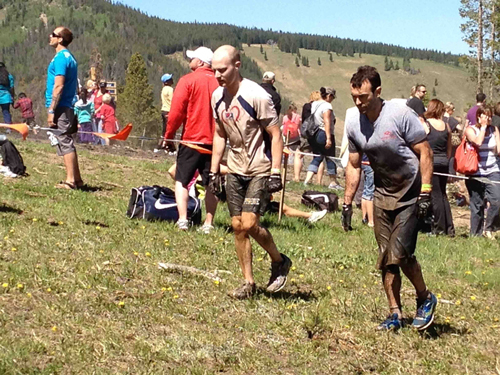
Here we are getting muddy…and tough?
TT Metabolic Resistance Training sessions had me well prepared for the Tough Mudder race. 2 hours, 50 minutes — and most importantly, no serious injuries. And pure domination on the uphill climbs from 8000 ft to 11,500 feet here in Beaver Creek.
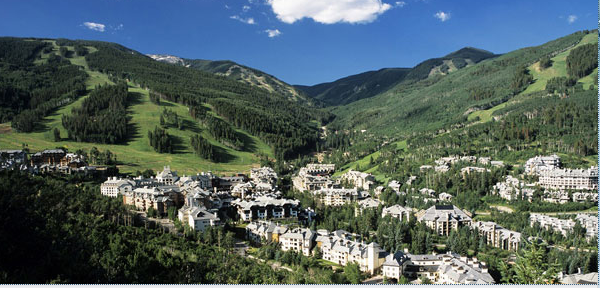
Beaver Creek, Colorado
The altitude threw in a bit of a twist, but my old friend and Exercise Physiology Professor, Dr. Stuart Phillips, told me, “All you need are 5 days of sleeping at altitude and you’ll be fine.” With that advice, I flew to Denver and stayed at 7400 feet above sea level in Golden/Genesee for a week. In the end, I held up pretty well with the altitude with only two ascents up the mountain leaving me breathing really hard.
Let’s take a detailed look at my training plan, taper-week, and finally, the event and obstacles on race day. It will give you a concise look of what you need to prepare for if you take the Tough Mudder Challenge.
The 8 Weeks Before – TT Adventure Race Training
A full plan is too long to put in a blog post, so make sure you get the 35-page TT Adventure Race Training (ART) program. One gentleman who did the race with us, Scott Whitlock, a 45-year old medical device salesman, said the TT ART program prepared him so well for the Tough Mudder that he thought it was easy and could have done another one on the same day! Scott’s time was 2 hours and 55 minutes for the Beaver Creek Course.
The Week Before – Taper and Reduce Training
At this point you need to remember one big fact. You can really only get hurt in the final seven days before the event. You can’t really build significant fitness levels in a week so don’t try to train hard as the event gets close. Take two full days off exercise, and with slightly increase your carbohydrate intake (potatoes, fruit, etc.) on the Thursday and Friday. You don’t need an insane carb-loading diet. This wasn’t a marathon – although darn close to a half marathon.
The Tough Mudder Morning – Be an Old Man
Each day I do my old-man warm-up prior to training or even just part of my off-day mobility and recovery. This was true for Race Day as well. Don’t skip the warm-up even if you do it at home a couple of hours before the race. I prefer to get things done early…so we were off to the course by 7:30am, an hour early for our start time of 8:40am. At the course, I kept moving and doing some light stretching for areas that I knew might cause problems. Overall, this system had me well prepared.
However, I forgot to bring my Acuball – a great self-massage tool for your IT band, soles of your feet, your glutes, and other sore areas. I really could have used this before and after the race. I had to settle for a golf ball instead.
For nutrition, eat well, but not irregularly on race day. For my early start time, I had a light breakfast and a small amount – but not an astronomical amount – of caffeine (in some chocolate covered coffee beans). Drink water and diluted carbohydrate beverages (like Vitamin Water or a sports drink) up to the race time, but don’t overdo it. You want your carbohydrate/glycogen stores to be topped up, but you won’t enjoy racing on a full stomach. I also consume a lot of Vitamin C which could help reduce muscle damage and soreness.
Make sure that you have a familiar routine for nutrition, warm-up, fluids, etc., based on your race-day start time. Do a couple of practice long workouts on the Saturday mornings leading up to your event…and throw in some challenges (as you’ll be instructed in the TT Adventure Race program).
Additional Race-Day Preparations
Take sunscreen, water, some light snacks, all of the requirements for your race (photo ID and waivers), and a cheering squad. This is a social event, and while still fun on your own, it’s much better when you have at least one running partner and some cheerleaders (who can also take pictures of you in your misery/triumphs).
BTW, it also helps if you reserve your hotel as soon as you sign-up so that you get the on-site hotel (if one exists). That reduces the stress of travel on the morning of the race. We were slackers in signing up, but drove down early enough that there weren’t really big crowds to deal with.
The biggest ROOKIE mistake I made was wearing shorts with no drawstring. Pretty silly, but not a major issue. Wet shorts tend to fall down, but they also dried relatively quickly between obstacles. Still, if you have running tights or rugby shorts, those would be optimal.
What a goofy pre-race photo. What am I, 9 years old? => 
For shoes, I wore the pair that I had been training in (but that still had plenty of miles left in them). Some folks were duct-taping their shoes on, but we had no issues with our shoes falling off during any events – not even in the mud.
We also decided to wear biking gloves, and it wasn’t a bad decision, although I don’t think it was a huge deal to have done the event without gloves.
The weather was beautiful in Beaver Creek, perhaps 65 degrees at start time, however, it got down into the 50’s at the top of the mountain. Add to that the fact I fell in some water just before a 1.5 mile climb to the top of the mountain, and it really brought down my body temperature. (At the end of the race I still had chills, even though it was over 75 degrees at the finish line. That said, I’ve heard some rough stories about April events in Ohio and New England that made me realize how easy we had it, weather-wise. Toronto in August will be perfect for the Arctic Enema obstacle.)
So be prepared. Take a long-sleeve shirt. One that you wouldn’t mind losing if you had too…Wear good shoes. Make sure you can do the distance in them. Get good socks that will prevent blisters. I wore a t-shirt, contact lenses, and sunscreen. Don’t wear your Sunday whites…then again, there were two people running in wedding dresses, and one of them was a man.
(A lot of folks got into the celebratory mood by wearing bizarre costumes. Frankly, I’m not after any extra attention, so I don’t see the appeal. But it’s entertaining.)
That’s pretty much it for preparation. Here are your essentials:
1) Use a proven program. (I.e. TT Adventure Race Training)
2) Cut back on training 7 days before…there’s not much you can do at this point except hurt yourself.
3) Eat more carbohydrates in the 2 days prior to the race.
4) Eat a good, but normal breakfast prior to the race. Have a little caffeine, but not more than normal, and drink fluids – and carbohydrates – as close to the race as possible without messing up your gut. If in doubt, be conservative.
5) Also remember that the transportation to and registration at the event can add 60 minutes to your pre-race time. Plan that in for both mental and nutrition prep.
Bottom line – I think you should be able to run 8 miles continuously if you plan on doing this event with minimal issues. Use the TT Adventure Race Training Program to get built up to this.
And don’t bite off more than you can chew…it’s not worth 2-3 months of rehab to do this event if you are NOT ready. Chill out, wait till next year, or train until you are ready and then travel to an event at that time.
In fact, remember my friend that I was planning with back in January? Well, he had an injured arm and I made a game-time decision that he should not race. And it was the right idea. Sure, he could have done 95% of the event, but he would have really hurt his arm in the 5% of events that needed biceps and shoulder strength.
Be smart.
This is no joke. It’s a high volume of exercise and you have to be ready so that you can focus…an inch misstep and you could have a broken ankle. It nearly happened to me as you’ll see in the events review below…
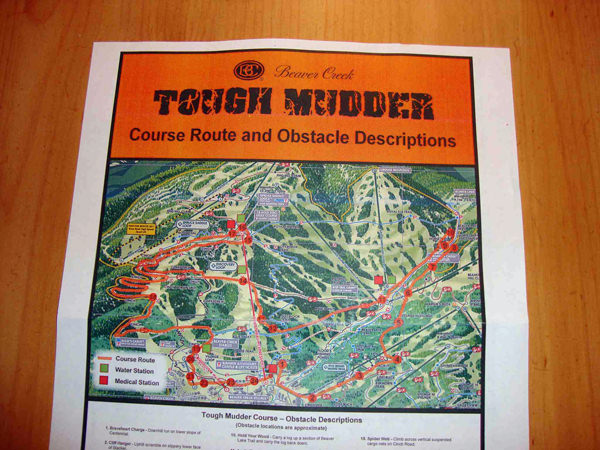
The Event
A funny thing happened on the way to the starting line…I nearly hurt myself on a pre-race obstacle. (The pre-event obstacle was almost the toughest part of the race, ironically.)
**Day After Update** – I definitely have some unusual soreness at the origin of my right pec where it attaches low on the sternum. I’ll need Active Release on this. Unbelievable that my worst injury came from a PRE-race mistake. *Shaking my head*
At the race, you’re assigned to a starting time in 20-minute increments. When it’s your turn to get into the starting gate, you must first scale an 8-foot “Berlin Wall” to get to the gate. I was unprepared – both physically and mentally for the obstacle. As a result, I ended up using too much of my upper body to scale it, and then I jumped off the 8-foot ledge rather than swinging my body over it and dropping down from 3-feet. Silly me. Fortunately, that prepared me to properly maneuver over the Berlin Walls on the official course, including the 10 foot walls at the top of the course.
After that near-incident, my racing partner, Jeff Schneider, the Director of Operations at www.EarlytoRise.com, made our way to the front of our starting group. As the race MC put us through some motivational chants, a Wounded Warrior was led to the front of our group. This young man had lost one of his legs in the Middle East and he was going to complete the full race. That’s toughness. We were reminded ourselves of that fact throughout the race.
Finally, it was race time. We started at 8:43am. The temperature was perfect.
Obstacle #1 – Braveheart Charge – A basic downhill run. Nothing to get too excited about.
Obstacle #2 – Cliffhanger – Uphill scramble on wet grass of steep ski slope. Heart rate was high, as was breathing. This is one of the few parts of the race where I wondered if the altitude was having an effect. The first mile of the race consisted mostly of a steep climb up the ski slope. It was brutal. Running turned to jogging that soon turned to walking. But still, we walked faster than most. We were there to push it.

Climbing from 8000 to 9500 feet.
Obstacle #3 – Devil’s Beard – Crawling under cargo net. This is where the race bib got ripped off. Pretty simple.
Obstacle #4 – Trench Warfare – Crawled through a short, muddy tunnel. Now I’ve never been to Vietnam and crawled through the preserved Vietcong tunnels, but now I know that I have no interest in doing that.
Obstacle #5 – Log Bog Jog – We started to pass a lot of people in teams at this point. The team concept is nice, but not for me. I’m just not nice and patient enough to wait for someone. I want to run at my pace. But hats off to those who supported their teammates in the entire race. Good for you and I hope it was fun. As for this obstacle, it was pretty simple.
Obstacle #6 – Shocks on the Rocks – Why would someone be throwing a rock at my head? Oh wait, no one was. I got shocked in this one and that’s what it felt like. In this obstacle you belly-crawl through icy water underneath live wires that deliver a decent voltage to you. Both Jeff and I got one good shock. The funny thing was that it made him feel woozy while it made me feel more alert. Then again, it could have been a number of factors that made us feel that way (altitude, caffeine, blood sugar).
Obstacle #7 – Berlin Walls #1 (official) – Thanks to my pre-race near-mishap, I was smart and did these the right way. A running start, a good jump, a half pull-up, swing the legs over, and slowly lower down. All without doing any damage to my left biceps/forearm or right shoulder, both of which have given me chronic nagging injuries over the last year.
Obstacle #8 – Swamp Stomp – Running through some muddy mud. But not tough mud. That would come later. It was also time to pass some more teams. We were doing great time.
Obstacle #9 – Hold Your Wood – Team log carry. Jeff and I picked up a long log and walked up about 150 meters and back down. Not easy. I felt my low-back working hard in this one. Make sure you use good posture and braced abs. Walking lunges could be of help here.
NOTE: Near injury #2 happened here when my buddy Jeff let down the log. It nearly crushed my ankle between another log. So just like setting dumbbells down properly in the gym, make sure you pay attention when you are getting set up or finishing the events in the Tough Mudder. Always stay focused. Your safety depends on it.
Obstacle #10 – Arctic Enema – Could also be called, “Craig’s Shorts Fall Down to Show Plumber’s Crack”. I apologize for the visual, but that’s what happened. For some, this was a dreaded event, but I actually enjoyed it. There’s a bit of trick to doing it with less shock to your body.
The event consists of jumping in a giant dumpster filled with ice water. There’s also an obstacle in the middle that requires you to submerse your head under water and swim to the other side (through a thicker section of ice cubes). Then you climb out.
The key is to ‘long-jump’ into the dumpster right up to the point of the obstacle so that you’re not walking through ice water for too long.
Still, even by the time I got out (and pulled my low-hanging shorts with me), my calf had started to cramp up a little. I ended up having calf cramps several times, on each side, but neither developed into a full-blown issue during the race. Both of my calves qualified as Near Injury #3.
We were also lucky in that we were quite warm by this time of the race (and it was at a lower elevation where the temperature must have been above 72 degrees). This would not have been as much fun if done in the Ohio race in the middle of April on a cold, rainy day. (Choose your race day wisely. ☺)
Obstacle #11 – The Gauntlet – This was my favorite event. A big pile of snow was set-up for us to climb and cold water was sprayed on us simultaneously. This, and the subsequent snow based obstacles, reminded me of many winter walks with Bally the Dog out on the farm. He and I have climbed dozens of snowbanks and drifts, and so I had plenty of experience for these challenges. (Ol’ Bally the Dog would have loved this section too. Actually, it would have been amazing to put him in the Arctic Enema. That ol’ pooch loves a cold swim.)
This was about the 6 mile mark of the race. Up until this point I was really enjoying it and thought about doing another one. My attitude changed after mile 9, as I’ll explain in a moment.
Obstacle #12 – Sweaty Yeti – Cliffs of snow were put in place and we had to find footholds and handholds in order to scurry up. I was really good at this event, and this was an area where a lot of teamwork with complete strangers took place. It also involved sliding down a steep embankment of snow into a pile of softer snow. An intimidating drop, but we did it without incident.
Obstacle #13 – Hanging Tough – Ring swings across water. There were 4 gymnastics swings set up in sequence, like monkey bars, and you had to make your way over a pool of muddy water. Rings 1 – Craig 0. I failed at both monkey-bar style events, and just about lost a contact lens during my plunge. On the other hand, my buddy Jeff looked like Tarzan swinging from vine to vine with grace and poise. He made it look so easy.
Following this obstacle was a 1.5 mile climb to the top of the mountain, and I paid dearly for having fallen in the water. As we climbed in elevation, the temperature dropped and I had chills for a long time after. Make no mistake, you need to stay out of the water as much as possible.
Obstacle #14 – Boa Constrictor – A quick belly crawl through mud inside giant tubes. A little rough on the knees and elbows, but not too muddy. Make sure you train with spiderman pushups, spiderman climbs, and planks to get your body comfortable with moving and staying low.
Obstacle #15 – Berlin Walls #2 – These walls were at the top of our 1.5 mile ascent, and were 10 feet tall. That meant you had to scale the walls (there was a trick to it that you’ll see when you do it). Again, be sure to swing your body over and lower yourself as gently as possible. It’s not surprising that a few people bust their ankles every year doing this challenge.
Obstacle #16 – Log Jammin’ – Crawl under and over some logs. Not too difficult, but along with the Berlin Walls, the log jam falls into the category of “nutcracker” challenges for men. Be careful as you swing your body over.
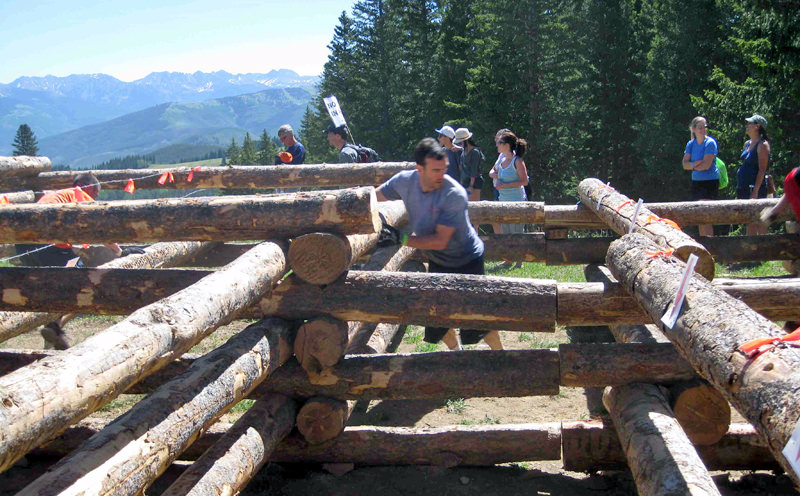
Protect your ‘boys’ when doing this.
After this we were about 9 miles of the way through the race. Unfortunately, we now had to endure a 3 mile descent down the ski slope. Frankly, downhill running puts an incredible amount of stress on your hips, knees, and quadriceps from the eccentric loading. This portion of the race was a turn-off.
That said, not every race is done on a world-class ski slope…so it would be interesting to try another Tough Mudder without extreme changes in elevation. I haven’t cancelled my Toronto Tough Mudder reservation for August, so perhaps I’ll still give it a go.
Obstacle #17 – Spider Web – This was really cool. You climb up a rope netting about 12 feet high. The top position is precarious because the netting swings wildly. Swing over and slowly climb down the other side, before continuing your downhill run.
Obstacle #18 – Kiss of Mud – Crawl under strands of barbed wire through mud in the dirtiest event of the day. It wasn’t hard, but you’ll be filthy after this one.
By this time, you can feel that the end is near. But don’t get too confident…
Obstacle #19 – Glacier – More snow to climb. Good times. For some reason I’m world-class at scurrying up snowbanks.
Obstacle #20 – Twinkle Toes – Walk across a balance beam over a pit of cold, muddy water. This was a personal victory for me to make it all the way over. It got a little hairy in the middle, but then I decided to just go really fast and I made it to safety just in time.
Obstacle #21 – Funky Monkey – The dreaded monkey bars. It was a fair distant and not only did you have to climb forward, but also up. I made it 75% of the way before I lost my grip and plunged into the muddy water below. Fortunately it wasn’t as deep, and frankly it cleaned me off. As good as I am at scurrying up snowbanks, I’m equally as bad at Monkey Bar challenges. Something to work on…
Obstacle #22 – Everest – This was my second favorite obstacle, but only because it was successful for me. Another personal victory. When we arrived at the giant quarter pipe, there was just a group of 7 of us. No one was on top to help out the folks trying to scale it. My friend Jeff took the first run at it, and missed the top by inches.
The key here, as Jeff explained as he walked back, was to take off at the right point of the quarter pipe where you can still get a bit of spring in your jump. And it worked for me. I ran forward and did a two-foot take-off at the perfect angle on the ramp. It vaulted me to the top of the pipe where I grabbed the ledge and swung my legs over.
This event is one where maximum ‘team work’ with strangers makes the run so unique. If you get help, make sure you give help. I stood at the top and waited for the next person to run and made sure to grab their arm and give them all the assistance they needed to successfully scale Everest. Then you move on and they stay to pay it forward. Or backward. Whatever. Just pay it.
NOTE: At the end of the race, after showering off and grabbing some snacks, we returned to Everest to watch the event. By this time there were a dozen people on top of the ledge helping the 30 or so runners try to achieve the challenge. And for some folks, this one is really tough. One guy made four attempts before he finally reached the top.
Coincidentally, he was wearing a referee’s costume, and gave a big touchdown signal upon finally making it to safety. Needless to say, the crowd gave a big cheer.
Obstacle #23 – Electroshock Therapy – Several months before my Tough Mudder I spoke with a friend that did the Austin Tough Mudder in 2011. He said he got knocked out cold by this event where you have to run through the mud and jump over a bale of hay, all while protecting your head from dangling electrical wires capable of shocking you out of consciousness. Good times.
My buddy Jeff Schneider and I arrived at our “Therapy Session” at the exact same time. We had just dominated Everest, and we could see the finish line. There were hundreds of spectators around the final obstacle, and we certainly didn’t want to be embarrassed. I let Jeff be the guinea pig. Off he went. He blew right through it. Little did I know he had a plan that he hadn’t shared. More about that in a second.
Then it was my turn. My plan was to run fast and straight as possible with my hands protecting my head. I was aware of the hay bale in the middle that I had to hurdle. Off I went. Zap. Zap. Zap. Three shocks. Each jolted me, and I could tell that my face expressed the voltage. Plus, the crowd was laughing (at me?).
Fortunately, while I looked goofy and got the triple-shock, I was able to emerge safely from the final obstacle. I caught up with Jeff and we high-tailed it to the finish line with one last burst of intensity.
**Update** – Jeff’s tip is to take long strides, because that means you are less frequently ‘grounded’ in order to get shocked. Seemed to work for him, although you have to be careful going through the mud and over the obstacles.
My tip is simply to stay low, move fast, and cover your hand with your hands and arms as much as possible.
Then finish strong and steady.
Our time, as I mentioned, was 2 hours and 50 minutes. Notta too bad. As we crossed the finish line we reveled in our accomplishment and appreciated the support, encouragement, and refreshments delivered from the enthusiastic Tough Mudder staff. They have a really, really well-run event. Hats off to them.
Jeff and I downed some replenishment drinks, bananas, and Builder Bars, and then went off to meet our cheerleaders and to use the shower station to get the mud off.
We also proudly sported our Tough Mudder headbands. I think I’ll be wearing that one for a while.
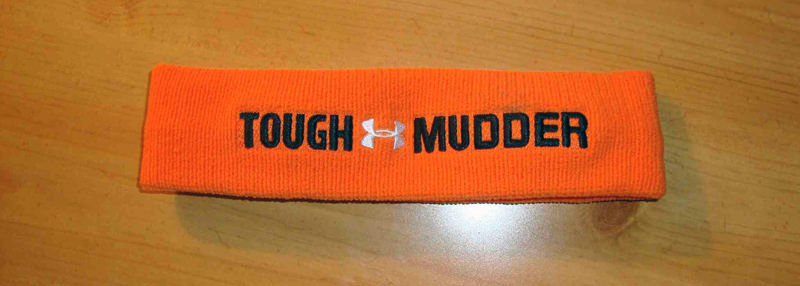
The Finish Line
It’s a great event. If you get a lot of enjoyment out of 10k runs, half-marathons, sprint triathlons, and the like, then yes, you’ll want to do a Tough Mudder too. The obstacles are challenging, but not intimidating. However, you must stay FOCUSED during your run. Take the risk of injury seriously.
But if you make it through, and I know you will (with proper training), you could become one of those many people hooked on Tough Mudder adventure races.
It looks like I’ll still be doing the Toronto event in August, and it will be a nice contrast because there certainly aren’t any 11,000 foot mountains anywhere near my hometown. But I’m sure they’ll come up with some excellent challenges of their own. In the meantime, I better go master those monkey bars.
Wishing you well in your quest to become a Tough Mudder.
Train hard, but smart, but hard.
One more thing…
The Tough Mudder race also taught me a new motto that you’ll probably be hearing from me more often.
Strong and Steady Wins the Race.
(Or at least finishes it.)
Not slow and steady, but STRONG and STEADY.
That’s what I kept saying to my buddy Jeff as we ate up the distance with each step…with each tough stride forward higher and higher during the ascent to the top of Beaver Creek resort.
Stay strong.
Stay steady.
Strong. Steady. Strong. Steady.
It was really helpful to me in those big climbs, and I want you to use that motto as you work through the obstacles in your life.
You’re tough. TT Tough.
You’re Strong. And you’ll Stay Steady.
Keep pushing.
Make this an amazing day where you overcome obstacles in your life.
Stay STRONG and STEADY,
Craig Ballantyne, CTT
Certified Turbulence Trainer
PS – You’ll be interested to know that…
…the Tough Mudder race supports Wounded Warriors.
And there was a gentleman with a prosthetic leg who started in our group, and he finished 3 hours after us, but dang, that’s the REAL definition of TOUGH.
He’s a fighter, just like you.
He pushed strong. (Like you will.)
He stayed steady. (Like you do.)
Keep on pushing over the obstacles in your life.
Stay Strong and Steady For Life.